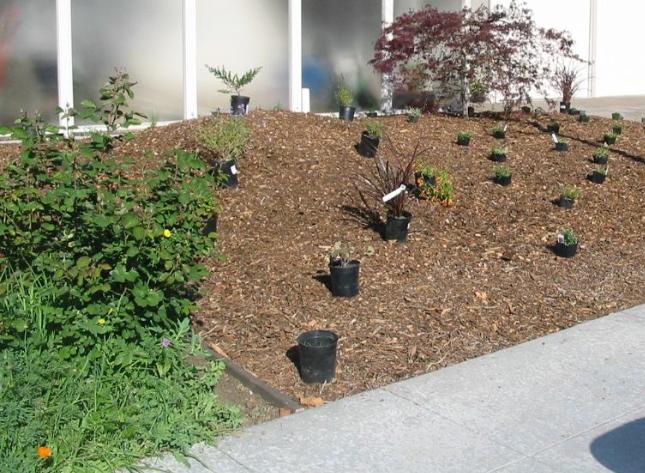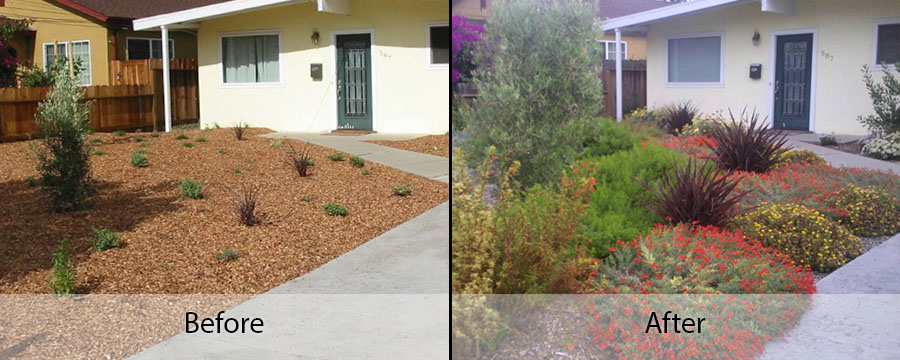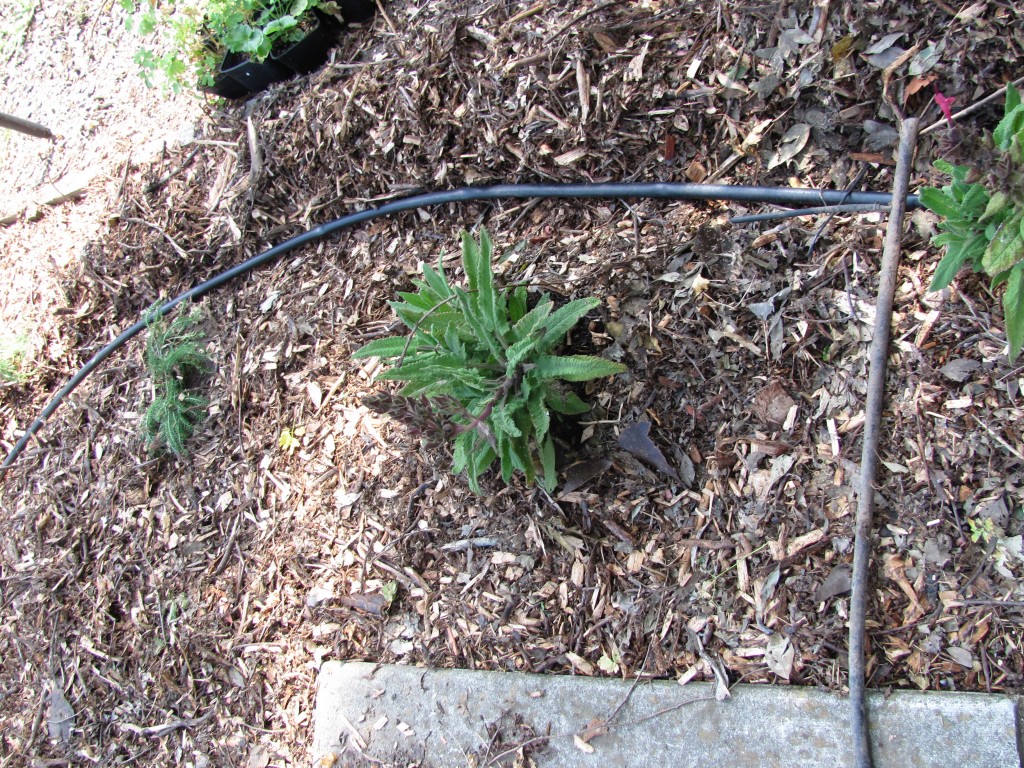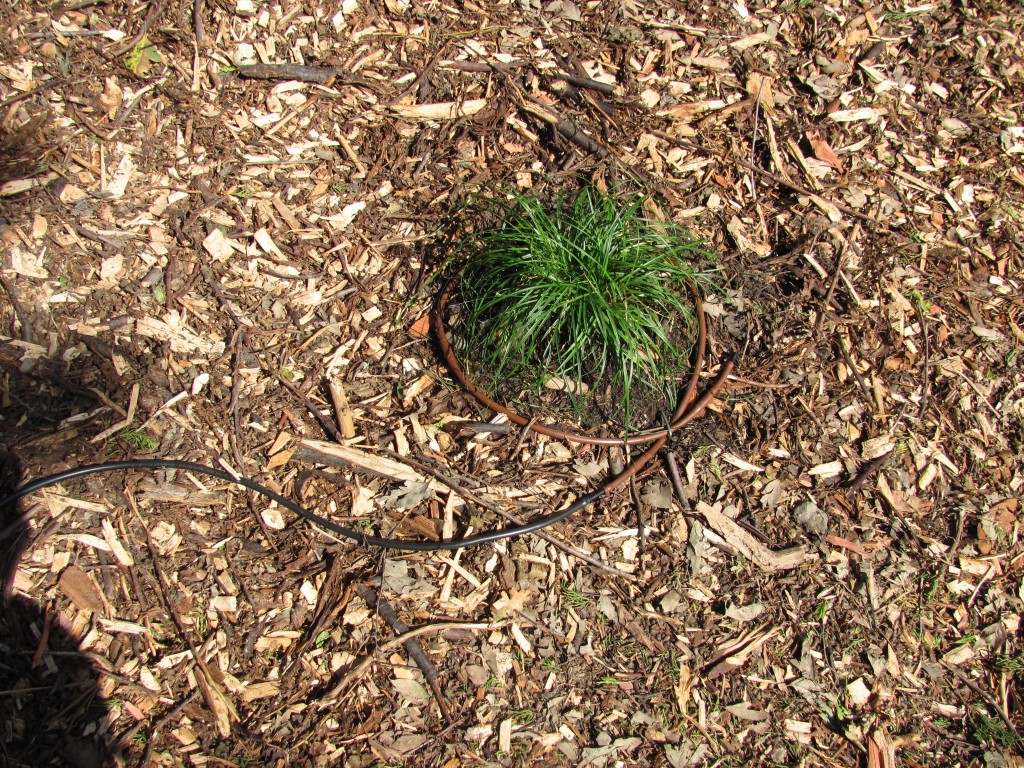Plant Placement

After purchasing the healthiest and most compatible plants from the nursery, we place them around the yard to get a sense of spacing, balance, practicality, and beauty. Even though plants often start out small, we give them a lot of space to grow. Some plants, like Ceanothus, multiply in size several times even in the course of one year!

Once the plants are placed, they are ready to plant. We dig a hole in the mulch to create a pocket which we fill with planting compost. We add beneficial Mycorrhizal fungi to the plant roots to help establish the root system and improve the soil health.
When we install Natural Front Yards, we minimize the amount of large equipment that we use. A major reason people rototill and add compost when planting is to improve drainage. With our program, we allow for proper drainage in our local clay soil by planting high, with the plant crowns about 2″ above the soil surface, in the mulch.
Irrigation
Drip irrigation is routed to each plant from a rough grid of ½” tubing laid on the surface of the soil, but under the top layer of mulch. Smaller tubing with emitters spiral around the plants.


We make sure that your drip system is connected to a controller and that the controller is set to properly water the plants. We install a smart controller that automatically adjusts according to your local weather via the attach weather station that is mounted on your roof. During our final walk-through visit, we go over how to program the controller and how to adjust it as the plants become established.
From here, the yard is basically finished. We just need to add a few finishing touches.
Stay tuned for the last installment of the blog series!